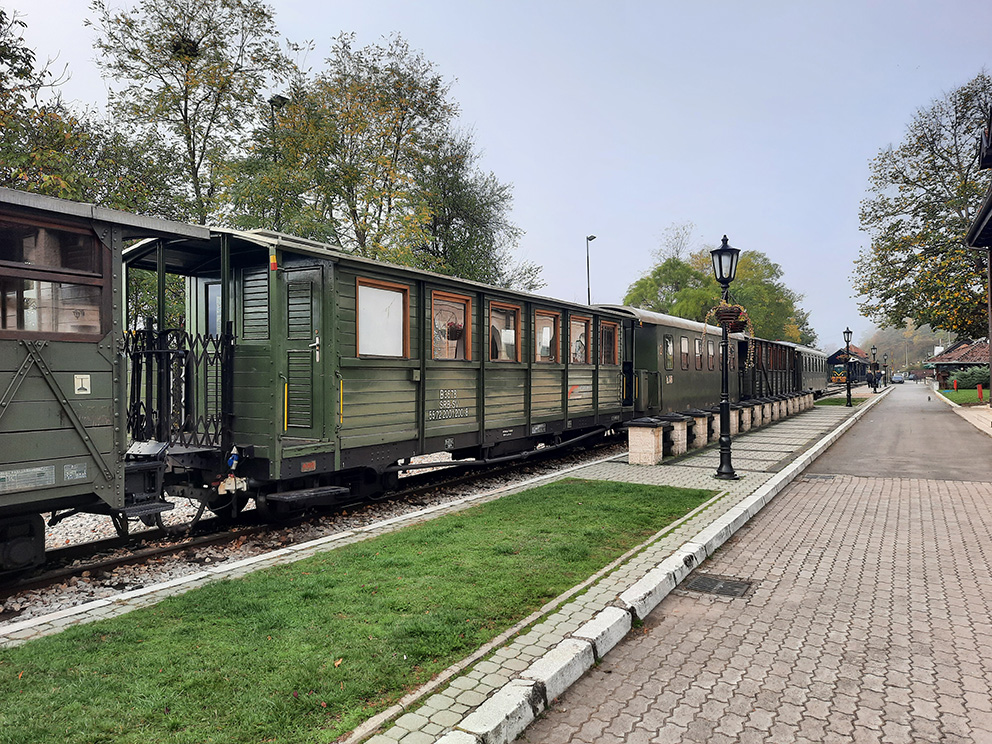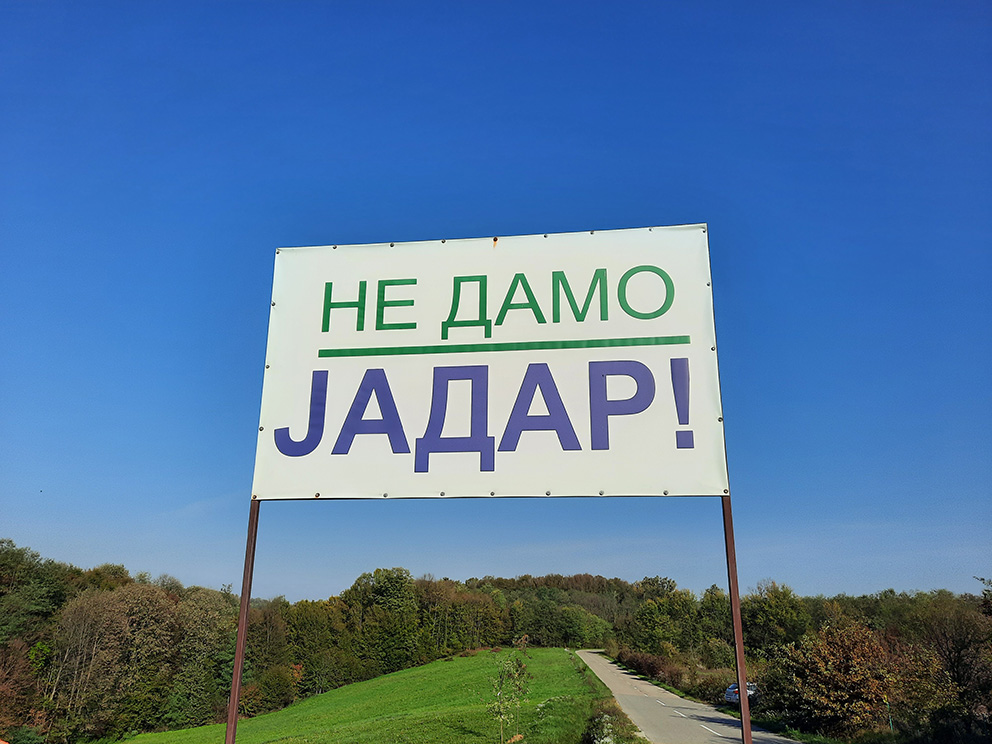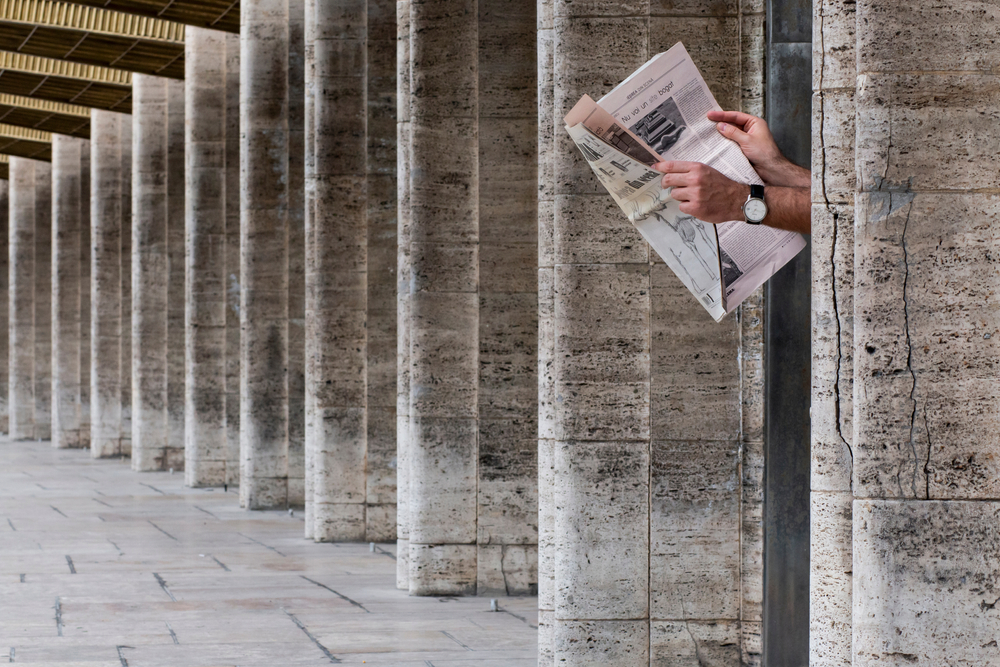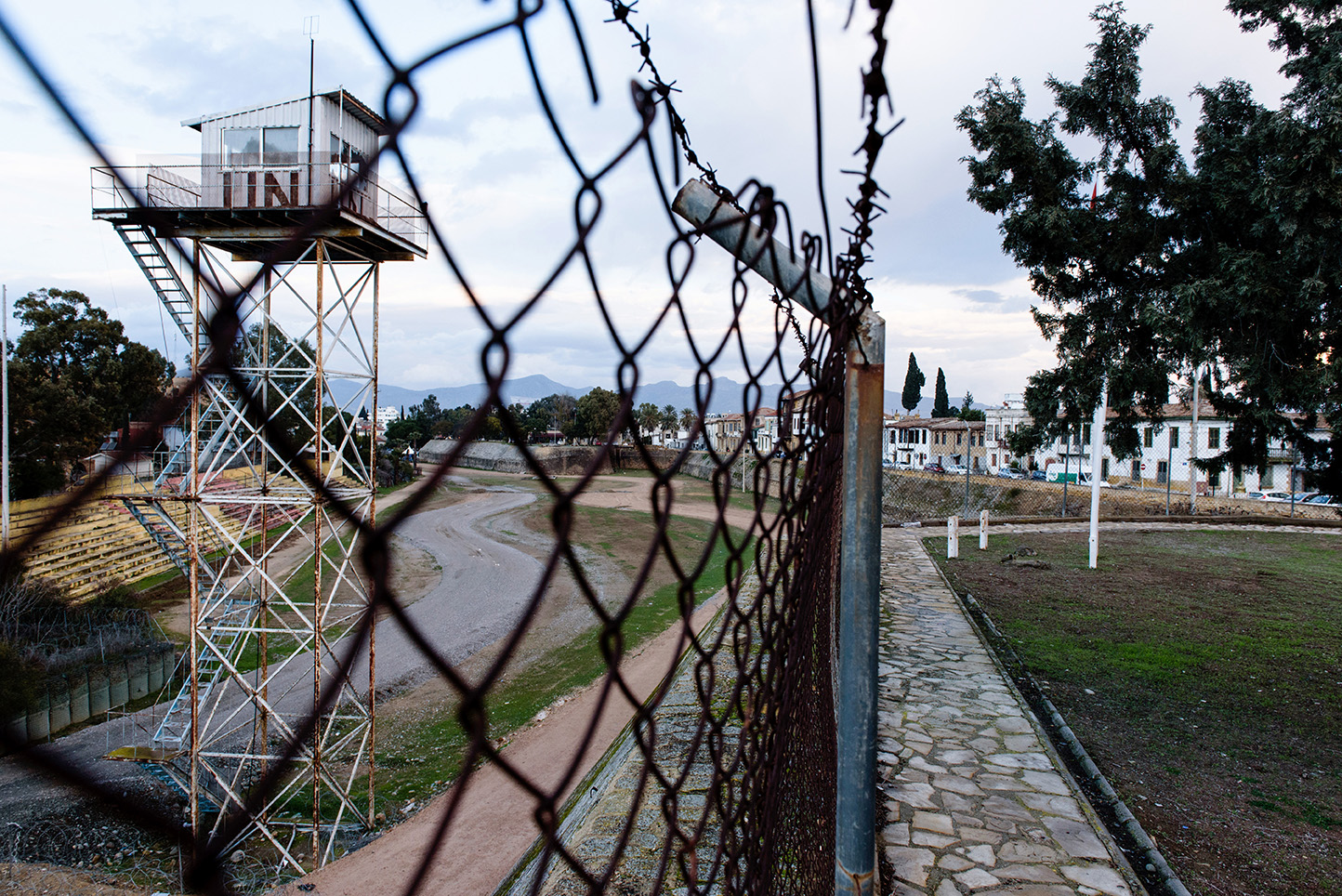Drina, a long journey to the Sava
The last episode of our reportage along the Drina: from Višegrad towards Žepa and Mokra Gora, all the way to the Šargan Eight, a railway built in 1916 by the Habsburg administration. We talk about the past, language variations and environmental protests
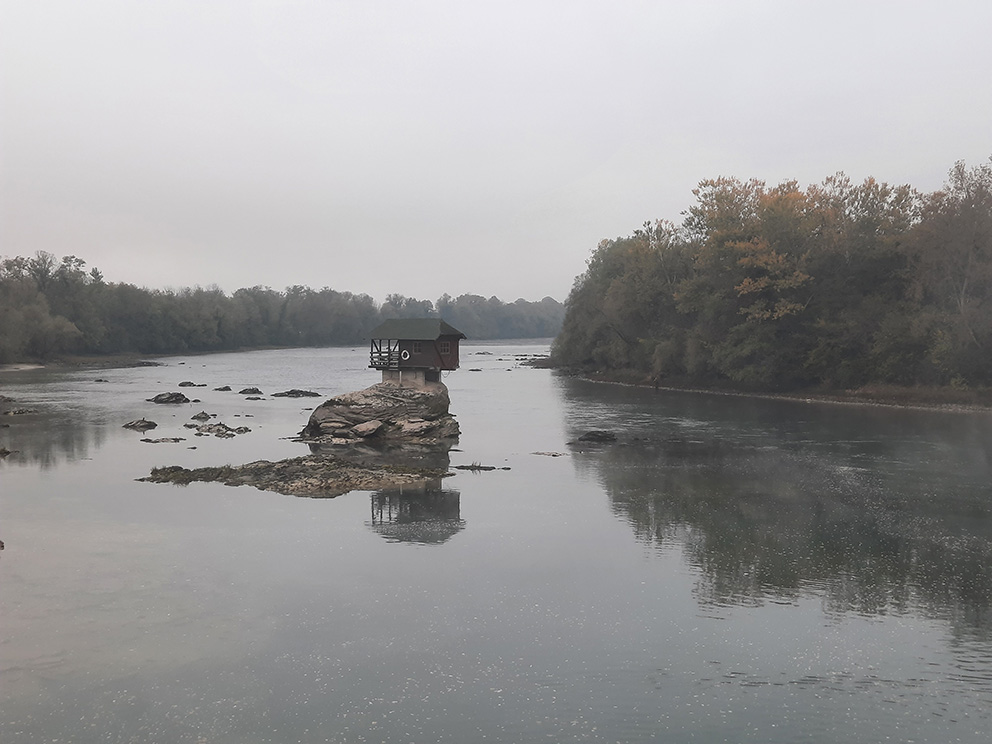
Drina-la-lunga-corsa-verso-la-Sava
“Little house on the Drina” in Bajina Bašta, Serbia (photo G. Vale)
After a couple of turns, the road leaves the center of Višegrad behind and quickly climbs up the hill. The Ottoman bridge disappears almost immediately, swallowed up by a hairpin bend. Then it is the turn of the Drina, while the road follows the Rzav River to the border between Bosnia and Herzegovina and Serbia.
Between the municipality of Višegrad, in Bosnia and Herzegovina, and the town of Bajina Bašta, in Serbia, the central stretch of the Drina is not easily accessible by car. The river flows through a deep, narrow canyon to the north, and begins to outline the Bosnian-Serbian border.
Boat trips are organised from Višegrad for those who want to discover this part of the river, usually with a stop at the Stari Brod Memorial Museum, opened in 2019.
Dozens of sculptures emerging from the waves symbolise Serbian civilians who, fleeing from the Ustasha, threw themselves into the river on 22 March, 1942. According to the Višegrad Tourist Office , on that day and in the weeks that followed, approximately 6,000 Serbs were killed there.
Other boat trips begin further north, near the “Slap jezero” restaurant, which can be reached from Žepa via a steep, winding road. Here, the Drina widens and forms Lake Perućac, contained by the dam of the Bajina Bašta hydroelectric power plant, the second of the three hydropower plants built on the river (the third is located near Zvornik).
As we arrive, in the midst of winter, boat trips are unfortunately no longer organised and we are forced to continue the journey by car.
Trains, mountains and fog
Once you cross the border at the Vardište crossing, you immediately find yourself in the Mokra Gora Nature Park. The Drina River is far away, but the area is no less interesting.
Undoubtedly the biggest atttaction is the Šargan Eight, a railway built in 1916 by the Habsburg administration and expanded in the 1920s by the Kingdom of Serbs, Croats and Slovenes, when a figure-eight-shaped route was created.
The narrow-gauge railway (0.76 m) connected the Serbian town of Užice to the Bosnian railway network via the Šargan Pass. It was thus possible to travel from Belgrade to Sarajevo and further to Dubrovnik, using the tangled route of the Šargan Eight: the journey from the capital of Yug0oslavia to the port of Dubrovnik took about 22 hours.
The line remained in operation until 1974, when it was closed because it was deemed economically unviable.
After all, times have changed. In 1976, the much more modern Belgrade-Bar (Montenegro) line was inaugurated, while in 1989 the construction of the Višegrad hydroelectric power plant dam definitively submerged the Austro-Hungarian track (today the boat "Vodeni Ćiro" , named after the historic train, sailes the Drina and Lim canyons, following the old railway line).
In recent years, the Šargan Eight has become a tourist railway that connects the stations of Mokra Gora and Vitasi and on rare occasions crosses the border near Višegrad.
Here you can also feel the presence of director Emir Kusturica, who built the village of Drvengrad in the early 2000s, where he filmed “Life is a Miracle” in 2004.
We continue our journey and, after passing Kremna, we climb between two uninterrupted rows of conifers to meet the Drina further north, in Bajina Bašta.
Along the Serbian state road
Perched on a rock in the middle of the river, the “Little House on the Drina” is probably the symbol of Bajina Bašta, a Serbian municipality of fewer than 10,000 inhabitants on the border with Bosnia and Herzegovina.
The house has existed for decades, although it has been rebuilt several times after being swept away by floods. Along the river, we come across many similar houses, which, however, are not located on the rocks but on the banks.
Many of these houses are holiday cottages, often built illegally, as an activist from Loznica explained to me.
“The course of the Drina has changed over time, and the cadastral maps are not always up to date. This is why it is often unclear who owns a particular parcel along the river – whether it belongs to Serbia or Bosnia and Herzegovina”, says Đuro, as we sit in a bar in Loznica.
Illegal construction right by the water reminds me of the Adriatic coast, and perhaps it is no coincidence. In Croatia, the D8 State Road, better known as the Adriatic Highway, built in the 1950s and 1960s, runs along the coast from the Kvarner Gulf to Dubrovnik and Konavle (and then further to Montenegro).
In Serbia, State Route 28 offers a similar experience following the Drina River at every turn. As for breathtaking water views and driving hazards, the two roads are similar, as confirmed by the curious presence of the “Plavi Jadran” restaurant about ten kilometers south of Mali Zvornik.
Curve after curve, the Serbian state road passes through Ljubovija, Mali Zvornik and other smaller villages, while on the opposite bank lie Bratunac, Zvornik, Karaj… These places are associated with the terrible war crimes committed in the 1990s. It is precisely at this point that the Drina becomes a border-non-border from a political, historical, symbolical, linguistic and ethnic point of view.
“For Serbian nationalists, the Drina is not a border, because Serbs live on both sides of the river. For Ivo Andrić, the Drina somehow separated the West from the East. From a linguistic perspective, the river almost marks a border between ekavica and ijekavica”, explains linguist Boban Arsenijević, professor at the University of Graz in Austria, referring to the two variants of Serbo-Croatian most widespread in Serbia and Bosnia and Herzegovina.
“It is not a precise limit. In Bajina Bašta, for example, the most spoken variant is ekavica, while in Banja Luka, ijekavica is used”, continues Arsenijević.
The Serbian language is particularly linked to the Drina and its territory. In Tršić, not far from Loznica and the riverbed, is the birthplace of Vuk Karadžić, a linguist and writer considered one of the greatest reformers of the Serbian language.
Today, the place where he was born is a memorial park, or rather an ethno-village that chronicles everyday life in rural Serbia at the turn of the 18th and the 19th centuries. The park stretches along the Žeravija River, a tributary of the Jadar, which flows into the Drina north of Loznica.
This area has recently attracted international attention, not so much for Karadžić but for a lithium mine project that has raised an uproar among the residents of the Jadar Valley and led to mass protests across Serbia.
Environmental battles
“There has never been industry or mining in this region, only agriculture, since time immemorial”. From the top of the wooden bell tower of the small church of St. George in Gornje Nedeljice, Nebojša Petković looks out over the Jadar Valley and the fields of corn, soybeans, wheat… Low hills extend to the horizon, where the Sava hides, and even further to the Danube, where the land becomes as flat as a pancake.
“A lithium mine would be a disaster”, adds Nebojša Petković, one of the founders of the “Hands off the Jadar” movement that first sounded the alarm.
The history of lithium in Serbia is a long one. More than twenty years ago, the British-Australian company Rio Tinto discovered what it claims is the largest lithium deposit in Europe: a mine capable of producing up to 58,000 tons of lithium per year. It would take thirty years to mine over 300 hectares, creating thousands of new jobs, at least according to investors and the government.
Recently, the EU also decided to support the project. However, for those who live in these areas, as well as for the majority of the Serbian population, the mine is above all an ecological bomb.
As I arrive in Loznica and Gornje Nedeljice, where the movement has its headquarters, the citizens organise a protest and a road blockade.
Nebojša Petković turns on the portable speaker, starting the the protest. The first song on the playlist is Ne lomite mi bagrenje by Đorđe Balašević, a prayer of a man seeking justice for an injustice suffered, similar to the ballads of Fabrizio De André. It is not entirely clear what happened, but the protagonist repeats his arguments until he loses patience. And everyone in the street sings at the top of their lungs.
In an attempt to push through the Rio Tinto project, the Serbian government changed the law on expropriations, making it possible to expropriate land in less than ten days. However, faced with protests, the authorities were forced to backtrack.
But the project has not been abandoned. On the contrary, considering the support received from Brussels last summer, there is no reason for Belgrade to give up. Meanwhile, lithium has also emerged on the other side of the river, in eastern Bosnia. There are reportedly over a million tons near Lopare, and experts claim that it is also found in many other locations.
Between Bijeljina and the Drina riverbed, I meet Snežana Jagodić Vujić, director of the environmental association “Eko Put”, and Ognjen Vujičić, an activist of the same organisation. They are committed to turning the area crossed by the Drinica, the old Drina Riverbed, into a nature park. In this area, due to continuous digging and sand extraction, about a hundred small lakes up to twenty meters deep have been created.
“The real Drina is a few of kilometers away”, explains Snežana Jagodić Vujić as we walk between pondes, reeds and trees gnawed by beavers. “Eko Put” has already made a difference, removing waste from an area that had become an illegal landfill. Now it is time to map the species present in the area.
“I have been defending the Drina for fifteen years now. There are many problems, from the cadastre to waste. Lithium is the straw that broke the camel’s back, after thirty years of corruption and theft. People oppose the project because they know everything would be contaminated by heavy metals”, adds Snežana Jagodić Vujić. Student protests have escalated in recent months in addition to the protests against the lithium mine in Loznica, and it seems that Serbia today is as agitated as the Drina.
Meanwhile, in Gornje Nedeljice, “Ne lomite mi bagrenje” is still playing. “I told them clearly, you can’t just come and destroy other people’s property”, sings Đorđe Balašević. “Don’t break my acacias, without them the wind will blow me away […] Don’t break my acacias, I kissed her under their branches. Oh, do I have to repeat it? Leave them alone or I’ll beat you up!”, shouts Balašević on the final notes, amidst general enthusiasm. The song by the musician from Novi Sad seems like a perfect anthem of a society in revolt.
The Drina flows into the Sava after a long journey north, and the latter leads it east to meet the Danube in Belgrade, where all of Serbia’s protests have been flowing in recent weeks.
This publication has been produced within the Collaborative and Investigative Journalism Initiative (CIJI ), a project co-funded by the European Commission. The contents of this publication are the sole responsibility of Osservatorio Balcani Caucaso Transeuropa and do not reflect the views of the European Union. Go to the project page

